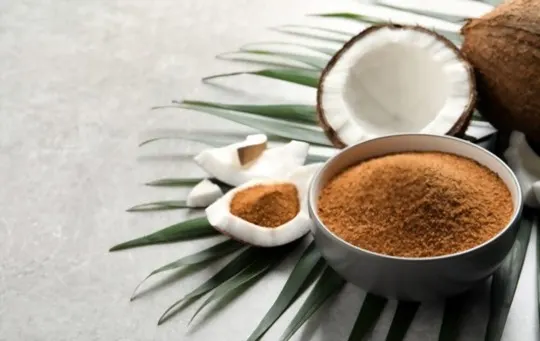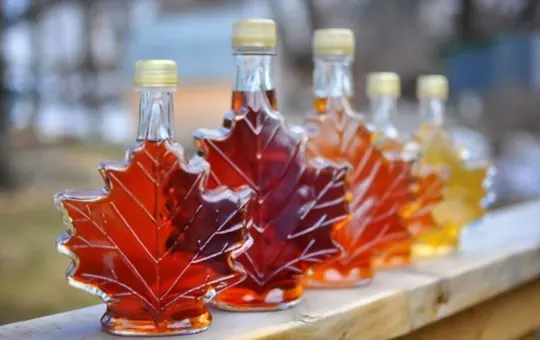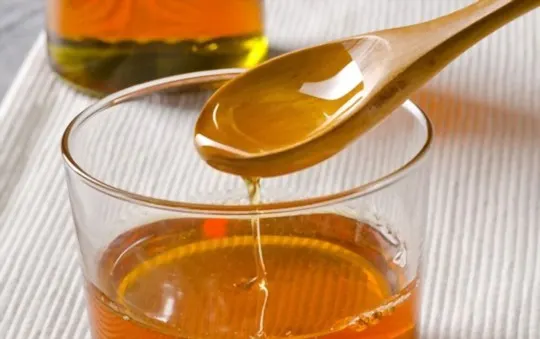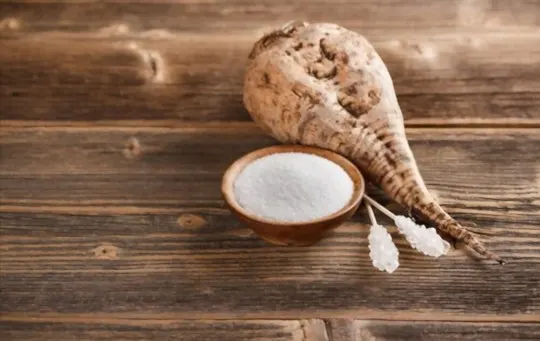Are you curious to know more about cane sugar and its uses in baking?
This natural sweetener has been used as a staple baking ingredient across the world, but many might be wondering experimentally if there are any more suitable substitutes available.
Luckily, there are many great alternatives to substitute cane sugar in baked goods, ranging from coconut sugar to maple syrup.
Additionally, there are proper techniques for swapping each of these ingredients—with strict measurements and accounts of baking time taken into consideration.
Read on for five of the best substitutes for cane sugar in baking.
What’s Cane Sugar?

Cane sugar, also known as demerara, turbinado and muscovado sugar, is a type of unrefined sugar made from the freshly-squeezed juice of sugar cane.
The juice is boiled and left to crystallize into individual granules and the result is cane sugar — identifiable by its golden hue, wide-grained texture and natural molasses flavor.
It’s not processed or refined like most commercial white sugars; it’s simply evaporating cane juice to reduce the water content.
Due to its exclusivity (cane sugar only grows in tropical climates), small producers extract their sugar from the stalks of local canes during harvest season, making it incredibly rare when compared to processed white sugars.
This high-end option gives pastries, cakes, cookies and confections a unique depth of flavor that isn’t possible with regular table sugar.
But understanding what goes into producing this treasured ingredient is only part of the story — how should we use it? Understanding how best to utilize cane sugar will make a great difference in both presentation and taste when baking.
To help guide you through using this sweet treat in your baking repertoire, we’ve identified five key points you should consider:
- Texture: When used at full strength as a topping or sprinkle on top of baked goods, demerara offers an irresistible crunchy texture that won’t easily dissolve in moisture.
- Flavor: Allowing your bakes to benefit from its distinctive caramel-like flavor without added sweetness;Use alongside other sugars but keep in mind that because it does have residual mollasses flavors already included some recipes might need adjustments for sharpness which other types of sugars do not possess.
- Grinding: If looking for finer consistency use a rolling pin or stand mixer fitted with crush attachment over placed wax paper and grind down until desired size;.
- Measuring swap out traditional refined offerings for equal amounts or slightly smaller helping for sweeter effect;.
- Storage: Keep well sealed airtight container in cool dark dry place away from heat source with an expiration date label if needed; ensure prevent getting wet by keeping lid tightened at all times between uses.
The 5 BEST Substitutes for Cane Sugar in Baking
Baking with sugar alternatives can be an easy way to reduce sugar content in any recipe.
These substitutes may provide different flavors or textures, so when choosing a substitute for cane sugar, it’s important to understand what each one brings to the table.
Using the right substitute for cane sugar is essential when creating sweet treats.
Here’s a detailed comparison of the 5 best substitutes for cane sugar in baking, along with their key characteristics and proper ratios:
| Substitute | Key Characteristics | Proper Ratio |
|---|---|---|
| Coconut Sugar | Derived from coconut palm sap, has a caramel-like flavor with a hint of coconut. It can be used as a 1:1 substitute for cane sugar. | Use the same amount as cane sugar |
| Honey | Natural sweetener with a distinct flavor profile. It adds moisture to baked goods. | Use 3/4 cup of honey for every 1 cup of sugar |
| Maple Syrup | Natural sweetener with a rich, distinctive flavor. Adds a subtle maple taste to recipes. | Use 3/4 cup of maple syrup for every 1 cup of sugar |
| Agave Syrup | Sweetener derived from the agave plant, with a low glycemic index. It is sweeter than sugar, so less is needed in recipes. | Use 2/3 cup of agave syrup for every 1 cup of sugar |
| Beet Sugar | Chemically identical to cane sugar, derived from the juice of sugar beets. Can be freely substituted for cane sugar. | Use the same amount as cane sugar |
Now let’s delve into each substitute in more detail:
1 – Coconut Sugar

Coconut sugar (also known as coconut palm sugar) is made from the sap of cut flower buds of the coconut palm tree.
The sap is boiled until it thickens and granulated.
This results in a light brown, coarsely-ground sugar that is rich in vitamins and minerals such as calcium, magnesium, potassium, iron, and zinc.
Coconut sugar has a low glycemic index (35) making it gentler on your blood sugar than traditional white or brown cane sugars.
It also has a mildly sweet taste with hints of butterscotch and caramel — making it perfect for baking.
Due to its unique flavor profile, coconut sugar may be used as a more flavorful substitute for traditional cane sugars in many baking recipes.
2 – Honey

Honey is quite popular when it comes to substituting cane sugar in baking recipes.
It is sweeter than white sugar, so it takes less honey to sweeten a dish.
In addition, it adds moisture and flavor to the bakegood; something else sugar can’t do.
It’s important to note that while honey is a common replacement for cane sugar, it’s still a type of sugar and should be used sparingly.
When substituting with honey, use three-quarters of what the recipe calls for in cane sugar, as well as reduce other liquids slightly.
Honey has a lower glycemic index than cane sugar, so people with diabetes should be aware that they may need additional insulin when eating cooked goods made with honey.
3 – Maple Syrup

Maple syrup is one of the most common cane sugar replacements, and it’s versatile enough to be used in many recipes.
It can be used in place of cane sugar in a 1:1 ratio, meaning you can use the same amount of maple syrup as you would regular sugar.
Be sure to note that when using maple syrup for baking, you should reduce the amount of other liquids in your recipe by one-fourth to account for its water content.
Maple syrup also has a slightly different sweetness level than cane sugar, so you may need to make small adjustments with each recipe.
4 – Agave Syrup

Agave syrup is a popular alternative to cane sugar as it is extracted from the same plant that produces tequila.
It has a mild, slightly sweet flavor and can be used in baking and cooking as a simple syrup or combined with other types of sugar for an even sweeter taste.
It does not have the same nutrient content as cane sugar, but it does contain some dietary fiber and is less processed than most refined sugars.
Furthermore, agave syrup does not cause the sharp spike in blood glucose levels associated with cane sugar, making it a good choice for individuals who are watching their blood glucose levels or want to avoid processed sugars.
Be sure to check labels though — many agave syrups are not completely pure and may still contain small amounts of added refined sugars.
5 – Beet Sugar

Beet sugar is a natural sweetener made from sugar beets.
It is almost indistinguishable from cane sugar and can be used for baking and sweetening food.
It has a mild, slightly earthy flavor and comes in a granulated form that looks like regular white sugar.
Beet sugar is also available in liquid form and can be added to recipes or used as a replacement for regular sugar in order to reduce the amount of processed ingredients in your baking.
One advantage of beet sugar is that it is relatively easy to find, even in local grocers or health food stores.
The taste difference between beet sugar and cane sugar is minimal, making it an excellent substitution for cane sugar when baking cakes, cookies or pastries that don’t require complex flavor notes.
Conclusion
Overall, cane sugar is a great sweetener for baking and many other culinary needs.
Due to its texture and flavor, it can lend a unique quality to baked goods as well as adding sweetness.
By replacing cane sugar with some healthier alternatives, you can still enjoy the same treats without compromising on their deliciousness.
Fortunately, many of the substitutes for cane sugar are health-conscious alternatives that can be just as sweet.
While coconut oil has the edge when it comes to nutrition, sugar sources such as monk fruit have come a long way over the years and can offer some great benefits while keeping your sweet tooth at bay.
Each substitute has its own unique flavor profile that allows you to play with different preparations and recipes so feel free to experiment.
Also keep in mind that many of these substitutes have both light and dark versions that change their flavor profiles dramatically so if you find yourself replacing cane sugar more often than not, try varying the types that you use for an original twist on your favorite dishes.

The 5 BEST Substitutes for Cane Sugar in Baking
Ingredients
- 1 – Coconut Sugar
- 2 – Honey
- 3 – Maple Syrup
- 4 – Agave Syrup
- 5 – Beet Sugar
Instructions
- Choose your preferred substitute from the list of options.
- Organize all of your ingredients.
- Use the proper substitute to cook your recipes.
